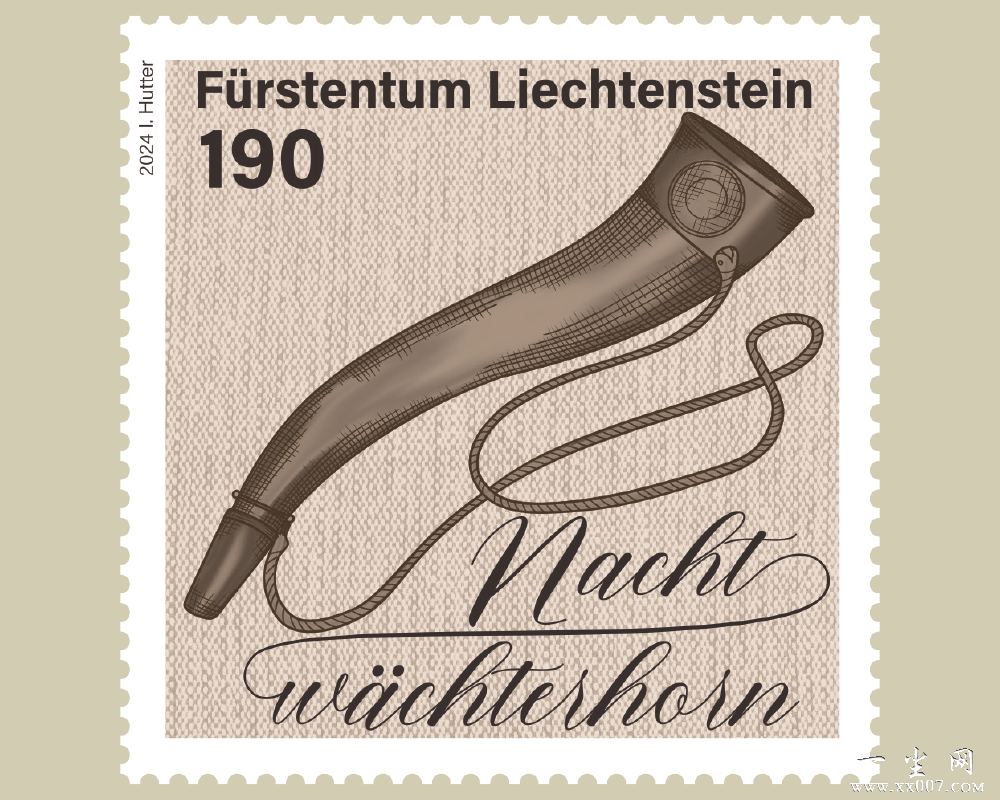
直到20世纪初,夜巡守卫还在我们这个世界上一些村镇的小巷中维持和平与秩序,列支敦士登的锚伦市也是如此。由马修·施赖伯(1861-1941)创作的“夜巡守卫号角”(面值:1.90瑞士法郎)便是保存在这里的一件文化遗产。据说马修·施赖伯在世纪之交的1919到1933年间曾担任夜巡守卫,遇到火灾时他便用号角的尖锐声音唤醒居民和消防员。
Up until the beginning of the 20th century, night watchmen also ensured peace and order in the narrow lanes of villages in our part of the world. This was also the case in Liechtenstein's municipality of Mauren where the "Night Watchman's Horn" (face value: CHF 1.90) by Matthäus Schreiber (1861-1941) is kept in the collection of cultural artefacts. It is said that he patrolled as a night watchman at the turn of the century and from 1919 to 1933 and used the piercing sound of his night watchman's horn to rouse residents and firefighters from their beds in the event of a fire.
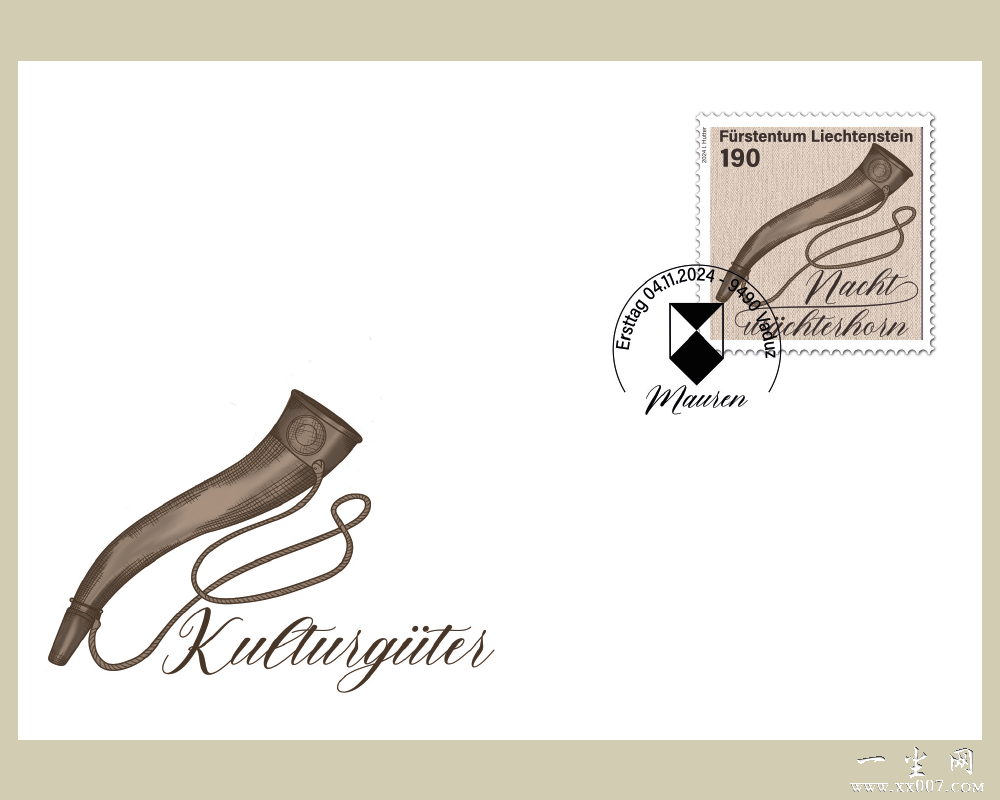
该号角由覆盖金属的喇叭口和木质吹嘴组成,由萨克森州马克诺伊基兴的乐器制造商李波尔德·汉明制作。红白相间的绳索可以让守卫将其斜挎在身上,随时取用。
The instrument has a metal-covered funnel and a wooden mouthpiece. It was made by the instrument makers Lippold Hamming in Markneukirchen, Saxony. With its red and white cord, the night watchman could wear it around his upper body over his coat so that it was always ready to hand.
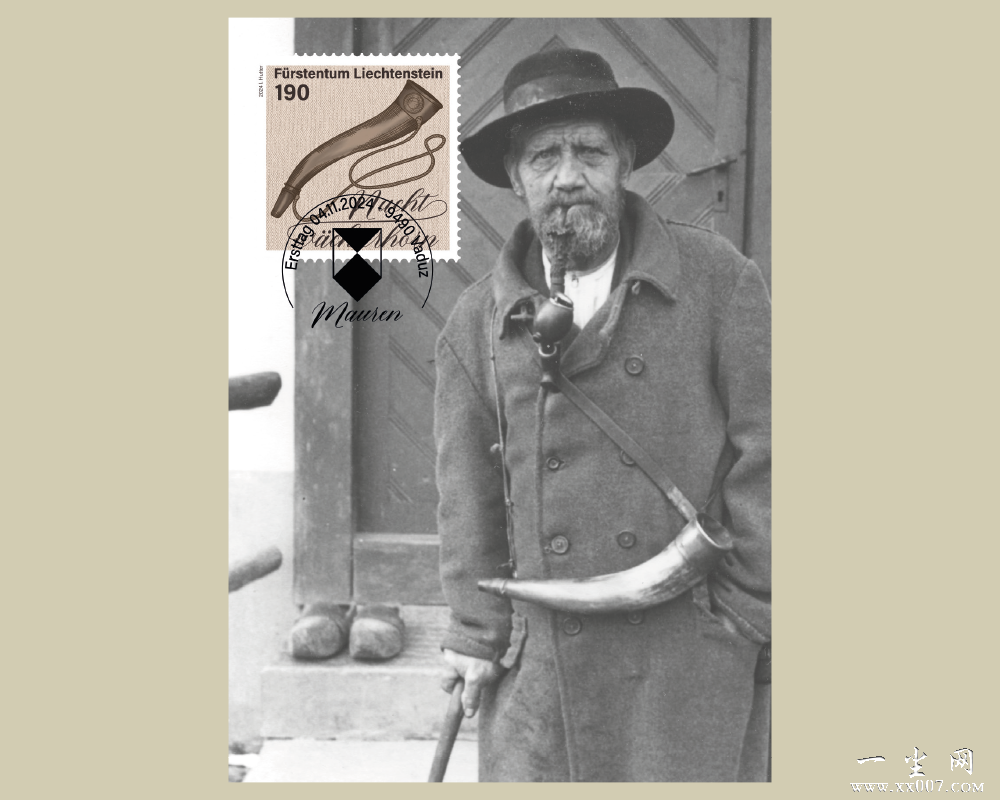
夜巡守卫也经常通过喊叫或歌唱报时,然而这种报时与时间几乎无关,更多是在证明他们在履行职责。随着出勤记录钟的引入,这种夜间歌声也逐渐消失。
Night watchmen were also often heard calling out the hours with a shout or song. However, this served less to tell the time and more as proof that they were doing their job properly. The nightly singing fell silent when time clocks were introduced to record working hours.
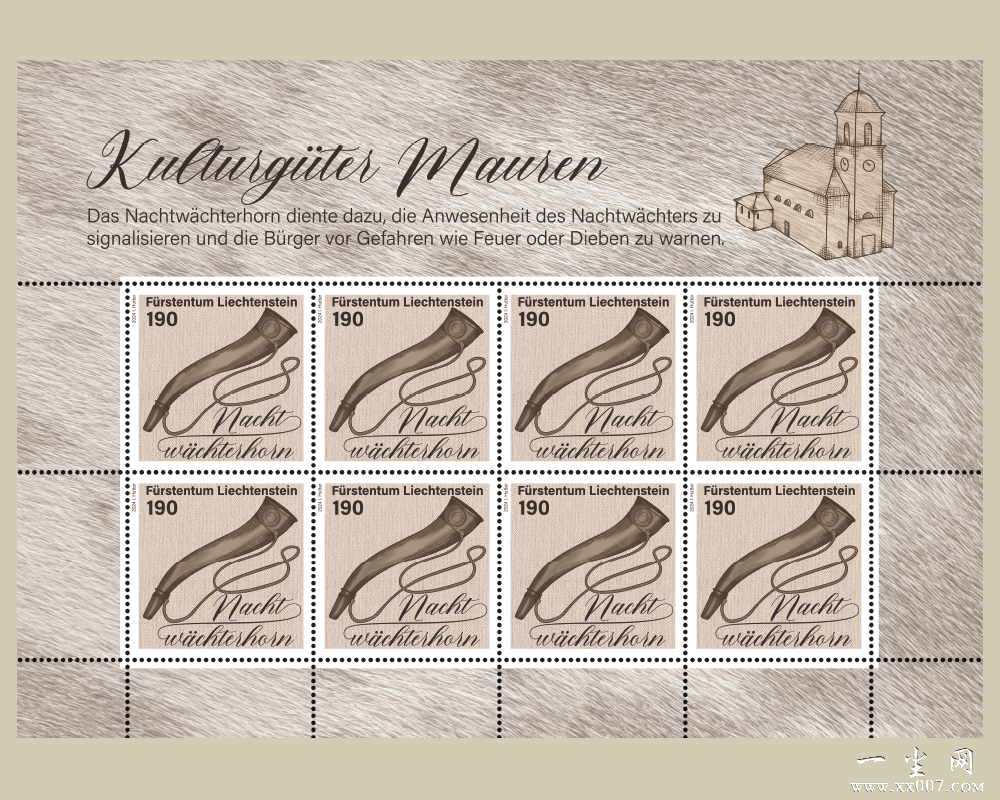
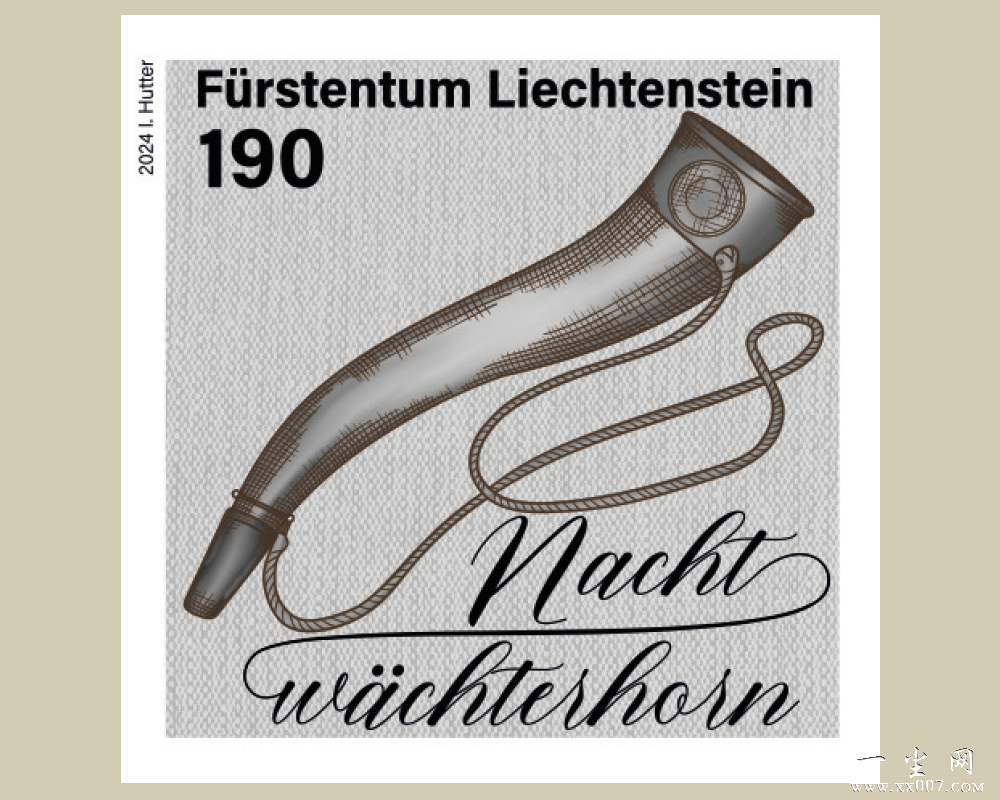
黑印样邮票
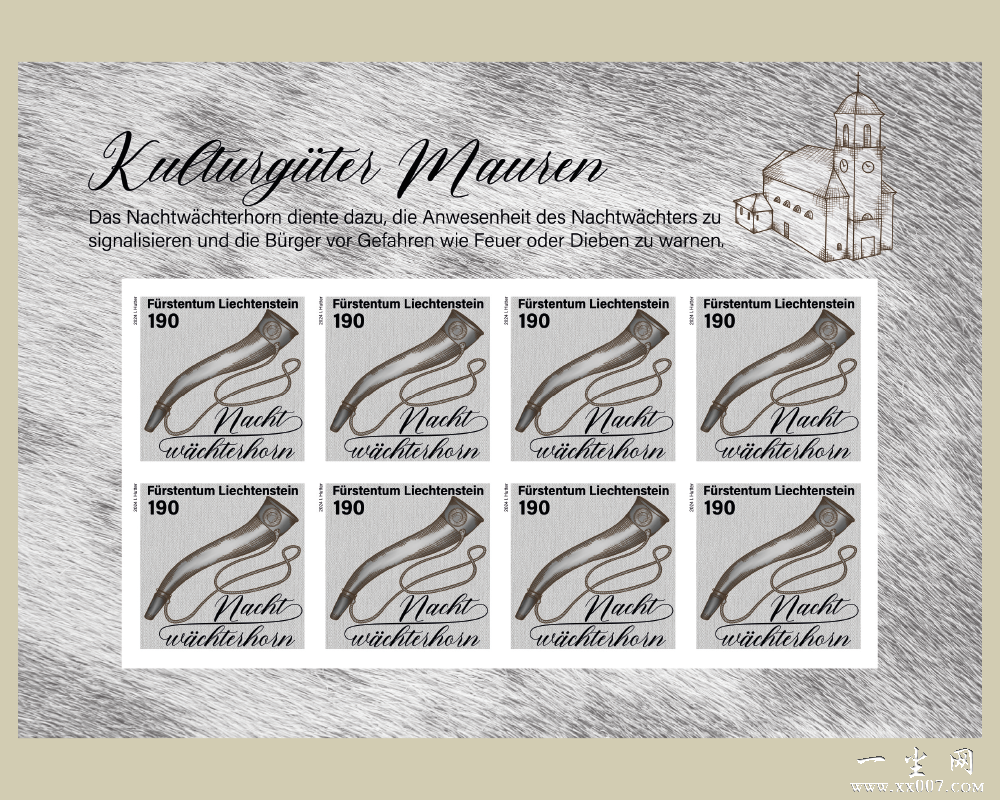
黑印样邮票版张

